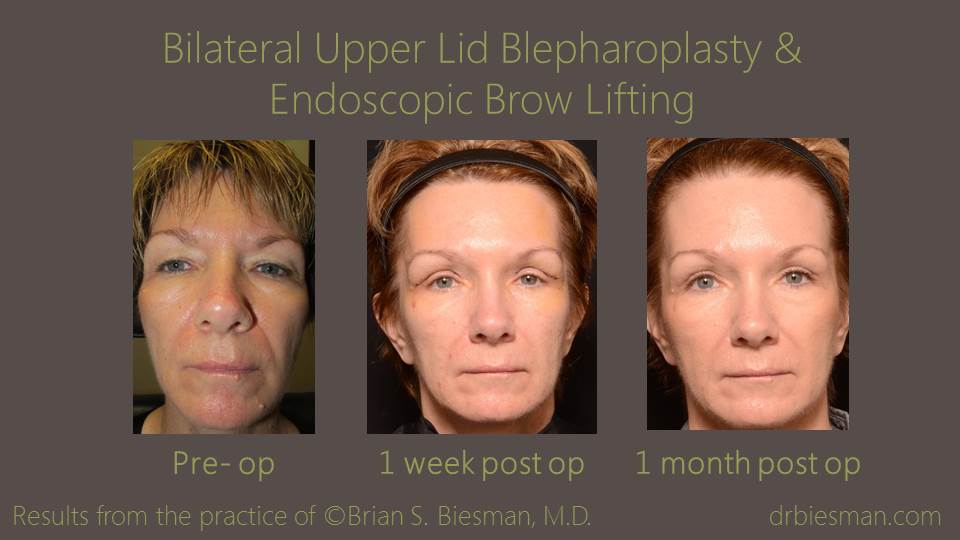What Causes Heavy Eyelids
Eyelids can become heavy for a variety of reasons, due to the effects of time, genetic and environmental influences. Heavy upper eyelids may occur due to the presence of excess eyelid skin, drooping of the eyebrows, weakness of a muscle inside the lid or a combination of these factors. When upper eyelid heaviness is caused by a combination of sagging eyebrows, excess eyelid skin, and/or weakness of an eyelid muscle, all of the conditions may require correction.
Many patients ask to only undergo eyelid surgery and wish to avoid surgery on the eyebrows. However, when the eyebrow position contributes significantly to heavy eyelids, simply removing this skin will pull the brow down further, producing an unappealing cosmetic result. There are several different approaches that may be taken to address sagging eyebrows ranging from full forehead and eyebrow lifting, a procedure that is often most desirable from an aesthetic standpoint but which is not covered by insurance, to less aggressive procedures that may or may not be covered by insurance.
Blepharoplasty and Insurance
In some cases, insurance will cover the cost of upper blepharoplasty surgery. Insurance companies are NOT legally obligated or bound to cover the cost of blepharoplasty surgery even if there is enough extra skin present that the peripheral vision is markedly impaired. Stated differently, insurance will not cover the cost of blepharoplasty if the peripheral vision is not impaired, and even the impairment of peripheral vision does not guarantee that insurance will pay for blepharoplasty surgery, even if it affects a patient’s ability to drive. If Dr. Biesman believes that your eyelids impair your peripheral vision to a significant degree, he will work as your advocate to try and obtain coverage for your surgery by your medical insurance carrier. However, if it is clear that your upper eyelids do not impair the side vision, it is unethical for Dr. Biesman to tell the insurance company that your blepharoplasty surgery should be considered a medically necessary procedure. Insurance does not pay for procedures that are done primarily for enhancement of our appearance.
What to Expect from Blepharoplasty
Functional upper blepharoplasty treatment is usually performed in an outpatient surgery center. “Twilight” sedation is typically administered intravenously so that patients do not feel any discomfort during the procedure. A laser is often used to make the eyelid incision, as this decreases both bleeding during surgery and the total duration of time required to complete the procedure. An incision is made in the natural crease of the upper eyelid and the excess tissue is removed. If eyebrow surgery is needed, this is usually performed once the eyelid tissue has been removed. Surgery typically takes less than one hour and self-dissolving stitches that disappear within 10-14 days are often used.
What to Expect after Blepharoplasty
Most patients do not find recovery after upper blepharoplasty to be difficult. The majority (85% or so) find that they do not need to use products stronger than extra strength Tylenol (or generic acetaminophen) to provide relief of any discomfort associated with surgery. We typically advise patients that 80% of bruising and swelling usually resolves within the first two weeks after surgery, with most patients returning to work after one week or less. Patients are asked to use cold compresses on their eyelids for the first 24-36 hours after surgery and to avoid heavy bending and lifting for one week. While complications can occur following any surgical procedure, when upper blepharoplasty is performed by an experienced surgeon, patient satisfaction is extremely high and the likelihood of a serious problem developing is low.
